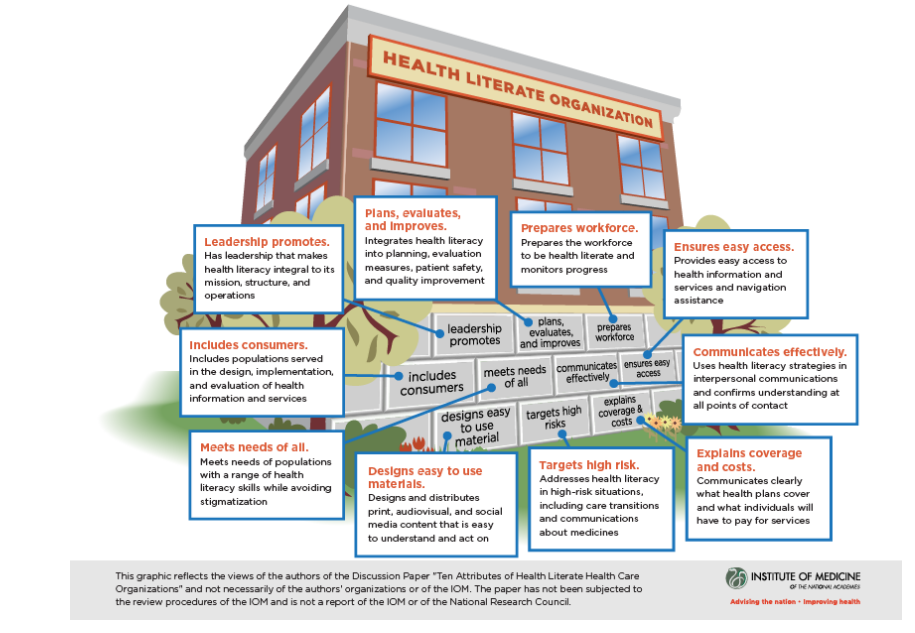Good news! The Center for Disease Control’s blog, Bridging the Health Literacy Gap–is back!
Good news! The Center for Disease Control’s blog, Bridging the Health Literacy Gap–is back!
In its come-back post, Dr. Cynthia Bauer highlights a recent contribution to the health literacy field, a publication issued by the Institutes of Medicine titled “Ten Attributes of Health Literate Health Care Organizations.” In some ways, it’s a health literacy manifesto for organizations. As Dr. Baur shares, this discussion paper provides steps health care organizations can take to make it easier for people to use the health care system. It states that:
a health literacy health care organization:
- Has leadership that makes health literacy integral to its mission, structure, and operations.
- Integrates health literacy into planning, evaluation measures, patient safety, and quality improvement.
- Prepares the workforce to be health literate and monitors progress.
- Includes populations served in the design, implementation, and evaluation of health information and services.
- Meets the needs of populations with a range of health literacy skills while avoiding stigmatization.
- Uses health literacy strategies in interpersonal communications and confirms understanding at all points of contact.
- Provides easy access to health information and services and navigation assistance.
- Designs and distributes print, audiovisual, and social media content that is easy to understand and act on.
- Addresses health literacy in high-risk situations, including care transitions and communications about medicines.
- Communicates clearly what health plans cover and what individuals will have to pay for services.
Prior to the recent health care decision, Kaiser’s Health Tracking Poll reported:
- Six of every 10 Americans said they didn’t know enough about the basics of health reform to judge its potential impact on their lives.
- Four in 10 weren’t sure whether it’s still the law of the land or they thought it’s already been overturned.
- Roughly 60 percent seem fine with the confusion — they say they’re either not closely following news of the looming health reform case or they’ve tuned it out altogether
Any organization with employees and a staff has an opportunity to be a leader in transforming the conversations around our health. From explaining health insurance to implementing health promotion and corporate wellness programs, progress is possible.
